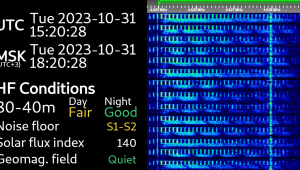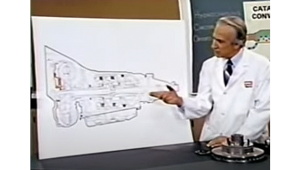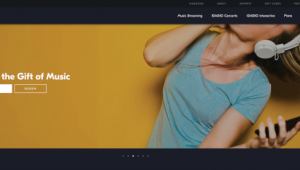Sony's Xperia Z3 Smartphone Handles Hi-Res

Consider, for example, Sony's flagship Xperia Z3 LTE: Snapdragon 801 quad-core 2.5 GHz processor with 3 GB RAM; up to 32 GB internal memory; 5.2-inch 1080p IPS display; 20.7 MP camera and 4K video recording; 3100 mAH battery; waterproof and dust-tight; Android KitKat 4.4.4 with planned upgrade to Lollipop. A nice perk: PS4 fans can play games remotely from the phone. All of that is state of the art and comparable to the best of the best. But the Z3 has something else. It plays hi-res audio.
Before we dig deeper into the audio specs, let's consider Sony's game plan here. Catching up to Apple's and Samsung's market share of phone sales would be difficult, or more realistically, impossible. But smartphones is where the action is, and if Sony is to survive as a consumer electronics company, it needs to be a player in that market. To do that, it needs to capitalize on its strengths. And one of Sony's traditional strengths is audio. Although the Sony name may not resonate as strongly with younger buyers, many other buyers still have complete faith in the company's ability to deliver top-notch audio. When hi-res audio started to appear on people's radar screens, Sony knew it had a winning ticket to a comeback.
Acting on that opportunity, Sony quickly started moving hi-res audio into its products, including a number of its Android smartphones. Which brings us to the Z3. Stylistically, the phone has glass on both the front and rear, with an aluminum band around the edges. It's a bit slimmer and rounder than previous Xperia models. (It measures 5.75 x 2.83 x 0.29 inches.) The fit and finish is premium throughout. Its IP58 rating means that theoretically the phone can be safely dunked 4.9 feet for 30 minutes (sorry - no salt water). The downside to the waterproof feature is flaps over the various ports. They need to be snug to ensure waterproofness, but they can also be a nuisance when accessing the ports. Some other phones are waterproof without resorting to flaps.
Of course, our main interest here is the audio features. The Z3 introduces a new bit of Sony software called DSEE HX (Digital Sound Enhancement Engine); it lets you upscale playback of tracks (such as MP3 and AAC) from compressed-res to higher-res. Sony says it analyzes and enhances specs such as frequency response, noise, and distortion. The software provides a modest bump in sound quality, provided the tracks have decent resolution to begin with. Overall - not a bad thing to have on board.
The Z3 has other audio features such as ClearAudio+. It is an equalization preset that aims to overcome the limitations of the front-firing stereo speakers; the outcome is a very enunciated sound quality that could be useful for digging out things like muffled movie dialogue. xLOUD is also available; it juices up sound dynamics from the built-in speakers. A Dynamic Normalizer minimizes volume differences between songs or videos. Other enhancements include numerous equalizer presets, a 5-band equalizer with Clear Bass, and a surround-sound effect for the front speakers. The enhancements do not affect sound output via Bluetooth or the multiport. Another nicety: the phone has software that supports Sony's MDR-NC31E noise-canceling headphones. Interestingly, the Audio Setup menu has a list of Sony headphones that you can select; presumably, this kicks in equalization that optimizes sound quality for any given model. Alternatively, you can simply select "general" headphones. Another item in the Audio Setup menu shows you the way to the promised land. You can select it to "Play high-resolution audio using USB DAC/DAC amp. When connected, sound effects become disabled."
If you're like me, my music library comprises a diversity of file formats. Good thing the Z3 supports playback of many file types: 3GPP, MP4, ADTS, AMR, DSF, DSDIFF, FLAC, Matroska, SMF, XMF, Mobile XMF, OTA, RTTTL, RTX, iMelody, MP3, WAV, OGG, and ASF, ALAC (decoder format). I specifically tested its hi-res capabilities with a number of different file resolutions. I was happy to see that the various formats I auditioned were supported and played. In particular, from a hi-res standpoint, the player played 96k and 192k WAV files, complete with the HD logo in the playlist. You will note that AIFF is not supported; you can load those files onto the phone, but the Sony play does not see them or play them. One more spec important to hi-res audio: memory can be expanded by an additional 128GB using a microSD card; SDXC is supported. Playback sound quality was excellent with both standard and hi-res files; if you can find a phone that sounds better, buy it. Of course, you'll want to hook up a USB-connected DAC for best results.
The Z3 is impressive in terms of extended battery life, excellent display, terrific camera, and its indifference to water. Even more important to me is its ability to play hi-res file formats via connected headphones or through a DAC. Combine this with its ability to add 128GB of memory, and you have a flagship phone that fully supports your hi-res audio needs.
The Z3 retails for $600, direct from Sony as an unlocked phone. Carrier-specific models are also available.
- Log in or register to post comments































































